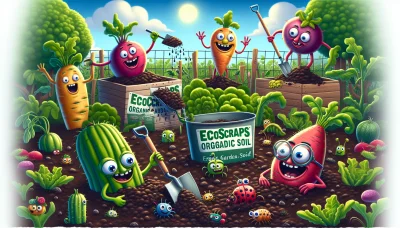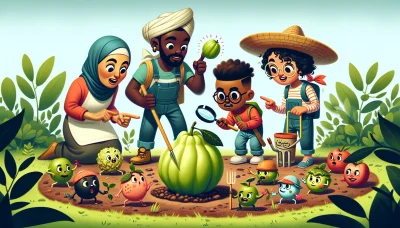Community garden design Quiz
Test Your Knowledge
Question of
Introduction to Community Garden Design
Community garden design plays a pivotal role in transforming urban and suburban landscapes into vibrant, green spaces that foster community engagement, improve environmental quality, and enhance food security. These gardens are carefully planned and managed spaces where individuals come together to grow a variety of plants, including vegetables, fruits, herbs, and flowers. Beyond providing access to fresh produce, community gardens serve as important social hubs where people from diverse backgrounds connect, share knowledge, and build strong community ties. The thoughtful design of these gardens is crucial, as it ensures the efficient use of space, promotes biodiversity, and creates a welcoming environment that encourages participation and sustainability.
Benefits of Community Gardens
-
Social Benefits:
- Enhances community engagement and cohesion
- Provides educational opportunities for all ages
- Creates spaces for cultural exchange and mutual support
- Reduces crime through increased neighborhood vigilance
-
Environmental Benefits:
- Improves local air and soil quality
- Increases biodiversity by supporting various plants and wildlife
- Reduces urban heat island effect through vegetation
- Promotes sustainable urban development
-
Health Benefits:
- Encourages consumption of fresh fruits and vegetables
- Provides a venue for physical activity
- Reduces stress and promotes mental well-being
- Offers opportunities for intergenerational and cross-cultural interactions
Key Elements of Community Garden Design
Designing a community garden involves several essential components and considerations to ensure it meets the needs of its users and the environment. The layout is a fundamental aspect, requiring thoughtful planning to make efficient use of space while creating an aesthetically pleasing and functional area. Plant selection is another critical factor; choosing plants that are suitable for the local climate, soil conditions, and the needs of the community is vital. Additionally, accessibility is a key consideration, ensuring that everyone, including those with disabilities, can navigate and enjoy the garden. These elements, among others, are crucial in creating a successful and sustainable community garden.
Planning Your Community Garden
- Identify Potential Sites
- Evaluate Soil Quality and Sunlight Exposure
- Check Zoning Laws and Regulations
- Engage with the Community for Support and Interest
- Develop a Budget and Funding Plan
- Design the Garden Layout
- Secure Necessary Resources and Materials
- Organize Volunteer Workdays for Setup
- Plan for Water Access and Conservation
- Establish Rules and Guidelines for Garden Use
- Gather Community Input and Feedback
- Launch the Garden with a Kickoff Event
Sustainable Practices in Community Gardening
Sustainable gardening practices are essential for the longevity and health of community gardens. Incorporating methods like composting, water conservation, and organic gardening not only supports the environment but also enhances the productivity and resilience of these communal spaces. Composting transforms garden and kitchen waste into valuable organic matter, enriching the soil and reducing the need for chemical fertilizers. Water conservation techniques, such as rainwater harvesting and drip irrigation, ensure that gardens are watered efficiently, preserving this precious resource. Lastly, organic gardening, which avoids synthetic pesticides and fertilizers, protects the ecosystem and promotes biodiversity by encouraging the presence of beneficial insects and wildlife. By embracing these sustainable practices, community gardens can thrive, providing fresh produce and a green sanctuary for all members of the community.
Community Garden Design Examples
| Type of Garden | Features | Benefits |
|---|---|---|
| Traditional Community Garden | Individual plots, shared tools, communal areas | Improves access to fresh foods, promotes community bonding, offers educational opportunities |
| Edible Schoolyard Garden | Outdoor classrooms, kitchen gardens, student-led design | Enhances nutrition education, fosters teamwork, encourages healthy eating habits |
| Therapeutic Garden | Accessible design, sensory plants, quiet spaces | Supports mental health, provides stress relief, aids physical rehabilitation |
| Urban Farm | Large-scale production, market stand, volunteer opportunities | Boosts local economy, reduces food deserts, strengthens food sovereignty |
| Pollinator Garden | Native plants, bee hotels, butterfly feeders | Supports biodiversity, aids in pollination, enhances local ecosystems |
Getting Involved in Community Gardening
Community gardening is a rewarding activity that brings people together, beautifies neighborhoods, and provides fresh produce to those involved. Whether you have a green thumb or are new to gardening, participating in or starting a community garden can be a fulfilling endeavor. To find a local garden near you, consider checking with community centers, local government websites, or social media groups dedicated to gardening in your area. For beginners, many gardens offer workshops or have seasoned gardeners willing to share their knowledge. Don't hesitate to reach out and get involved; it's a fantastic way to learn, grow, and contribute to your community.












